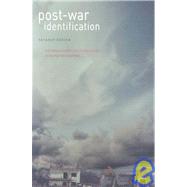
What is included with this book?
| Maps | p. 8 |
| List of abbreviations | p. 11 |
| Acknowledgements | p. 13 |
| Framing the Question | |
| Prologue: Chronology of the war | p. 17 |
| The war in Herzegovina | |
| The war in Stolac | |
| The return | |
| The public sphere in Stolac | |
| Introduction | p. 29 |
| The structure of the book | |
| The field | |
| Anthropological perspectives on war and war-related violence | p. 37 |
| Instrumentality/structure | |
| Expression | |
| Experience/narrative | |
| Relevance to my study | |
| The unmaking of the world | p. 49 |
| The destruction of the everyday world | |
| The destruction of stories | |
| The destruction of communication | |
| The all-pervasive feeling of loss | |
| Remaking, identification, and counterdiscourse | p. 75 |
| Remaking | |
| Discourse | |
| Resistance | |
| Who Are They, the Ones Who Did This to Us? | |
| Introduction to part II | p. 97 |
| Yugoslav nationalism | p. 99 |
| The First Yugoslavia | |
| The Second World War | |
| The Tito era | |
| After Tito: nationalism explodes | |
| Politika | p. 123 |
| Politika as a moral category | |
| Politika as resistance | |
| Politika as externalisation of the ungraspable | |
| Politika as a way of analysing | |
| Posteni ljudi - decency rather than ethnicity | p. 135 |
| Decency and moral disapproval | |
| Decency and the legitimisation of interethnic interaction | |
| Decency and Muslim identity | |
| Nekultura - culture rather than ethnicity | p. 149 |
| The uncultured Other | |
| 'The revenge of the countryside' | |
| Complexity in ethnic categorisation as part of the counterdiscourse | p. 159 |
| Croats from central Bosnia | |
| Croats from the countryside | |
| Croats from Stolac | |
| Croats from Croatia | |
| Ethnic denunciations | |
| 'Good Croats' | |
| Summary of Part II | p. 183 |
| Who Are We, Since This Was Done to Us? | |
| Introduction to part III | p. 187 |
| The rise of Muslim national identity in Bosnia Herzegovina | p. 189 |
| The introduction of Islam | |
| Austro-Hungarian rule and the emergence of a politicised ethnoreligious Muslim identity | |
| The communist regime and the secularisation of Muslim identity | |
| The SDA and the emergence of Muslim nationalism in the post-Tito period | |
| The war - Muslim nationalism escalates | |
| Bosnian Muslim identity in everyday practice | p. 207 |
| Pre-war Muslim identity in everyday life | |
| The influence of war on Muslim everyday identity | |
| The national identity that failed | p. 217 |
| National identity | |
| Religious identity | |
| Localistic identifications | p. 233 |
| The Stolac spirit | |
| The struggle for local identity | |
| Ideal of tolerance and coexistence | p. 245 |
| The trouble-free past: a space uncontaminated by the war | |
| The past as a political comment on the present | |
| Tolerance and coexistence as sources of identity | |
| The merging of tolerance and Muslim identity | |
| The Balkans - Europe | p. 263 |
| The discursive construction of the Balkans - Europe | |
| Balkan identifications in Stolac | |
| European identifications in Stolac | |
| The role of the victim | p. 285 |
| The conspiracy | |
| Criticism and decency - mosques and churches | |
| Generational lopsidedness | |
| Summary of Part III | p. 297 |
| Conclusion | p. 299 |
| Bibliography | p. 305 |
| Table of Contents provided by Ingram. All Rights Reserved. |
The New copy of this book will include any supplemental materials advertised. Please check the title of the book to determine if it should include any access cards, study guides, lab manuals, CDs, etc.
The Used, Rental and eBook copies of this book are not guaranteed to include any supplemental materials. Typically, only the book itself is included. This is true even if the title states it includes any access cards, study guides, lab manuals, CDs, etc.